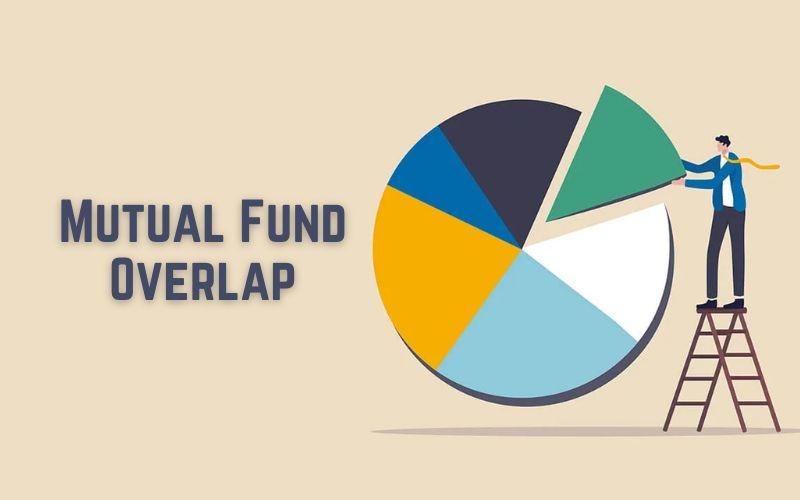
For any investor, achieving a balanced investment portfolio is essential. However, mutual fund overlap is a common pitfall that many people run across. This happens when an individual holds comparable holdings in many funds, potentially undermining the portfolio’s diversity. Identifying and managing mutual fund overlap is critical for maintaining a balanced investment plan and ensuring that each investment contributes individually to your financial objectives.
Mutual Fund Overlap: Short Overview
Mutual fund overlap happens when many funds in a portfolio own similar shares or items. This frequently arises when funds have identical mandates or target similar investment sectors. The primary concern with overlap is that it decreases the benefits of diversification, exposing the investor to additional risk and volatility.
Typically, investors may calculate CAGR to identify overlap across mutual funds in their portfolio by comparing their growth rates over time, which reveals similarities in investment methods and holdings.
Example of a Mutual Fund Portfolio Overlap
Suppose an investor holds shares in two mutual funds: Fund A and Fund B. Fund A specializes in large-cap technology equities, whereas Fund B is a comprehensive large-cap growth fund. After evaluating the assets, the investor realizes that both funds have major investments in the same firms, including Apple, Google, and Microsoft. This overlap indicates that, rather than diversifying, the investor has unwittingly expanded their exposure to the technology sector and certain large-cap stocks, thereby affecting the portfolio’s risk and return profile.
Causes of Mutual Fund Overlap
Mutual fund overlap can stem from several sources:
- Similar Fund Families: Investors may purchase many funds from the same business, which often follows identical investment philosophies and tactics.
- Overlapping Strategies: Certain strategies, like investing in large-cap growth stocks, might be common across various funds, leading to unintentional overlap.
- Lack of Awareness: Investors may not be fully aware of the underlying holdings of their funds, especially if they do not regularly review the fund’s detailed compositions.
Implications of Mutual Fund Overlap
The consequences of mutual fund overlap can be significant:
- Increased Risk Exposure: Overlap can result in overexposure to specific sectors or equities, raising the chance that such areas underperform.
- Reduced Returns: With more funds holding similar assets, the potential for diminished returns grows as the same investments are essentially being made multiple times.
- Inefficiency in Costs: Overlapping funds can frequently end in paying numerous sets of fees without getting greater diversity or the opportunity for higher returns.
How to Detect Mutual Fund Overlap?
Detecting mutual fund overlap may be intimidating, but it is feasible with the appropriate methodology. This becomes obvious when two funds are significantly invested in the same firms, necessitating a hands-on approach to portfolio management.
Step 1: Review Your Fund Holdings
Begin by reviewing the top holdings listed in each mutual fund’s quarterly report or on the fund’s website. Identify any repeated companies across different funds.
Step 2: Use Portfolio Analysis Tools
Use tools like Morningstar’s Portfolio X-Ray to visualize overlaps. These tools show detailed overlaps, including sector and geographic exposure, helping you pinpoint redundancy.
Step 3: Compare Holdings Manually
For those preferring a manual approach, compare each fund’s detailed holdings from their fact sheets or annual reports. This can confirm automated tool findings and aid in decision-making.
Step 4: Regular Monitoring
Create a procedure, such as a quarterly review, to track portfolio changes and manage new overlaps as markets shift.
Strategies to Minimize Mutual Fund Overlap
Minimizing mutual fund overlap enhances your portfolio’s efficiency and potential returns. Here are some concise strategies to help achieve this:
- Reevaluate Your Investment Goals: Consider your long-term financial goals to drive your fund decision. Adjusting my assets to include more varied industries, such as healthcare, helped to balance my formerly tech-focused portfolio.
- Consult with a Financial Advisor: A financial advisor can assist you in finding overlaps that you may have overlooked. My adviser once pointed out a 70% overlap between two big funds, triggering a strategic realignment that spread my assets across many asset classes.
- Diversify Across Different Fund Categories: Use a combination of index funds, actively managed funds, international funds, and sector-specific funds. Each category responds differently to market shifts, resulting in a more comprehensive safety net.
- Regularly Review Fund Holdings: Annually review your fund holdings for any substantial changes in management or strategy. This method helps to keep a balanced portfolio by altering holdings as appropriate.
- Use Portfolio Analysis Tools: Leverage tools to visualize fund overlaps. A clear graphical representation of overlaps can prompt necessary adjustments to your portfolio.
Conclusion
Mutual fund overlap is a big issue that might jeopardize the efficacy of your investing portfolio. By being proactive in identifying and managing overlap, you may ensure that your investments are well-diversified, thereby reducing while increasing potential returns. Regularly analyzing and altering your assets is critical for keeping a healthy financial portfolio.
This complete method of analyzing and eliminating mutual fund overlap will enable investors to make better selections and maximize their investment returns.
Related
Discover more from reviewer4you.com
Subscribe to get the latest posts to your email.


![How My Client Went from 50k in Debt to 50k in Monthly Revenue [Case Study]](https://reviewer4you.com/wp-content/uploads/2024/11/pexels-photo-1169953-336x220.jpeg)


